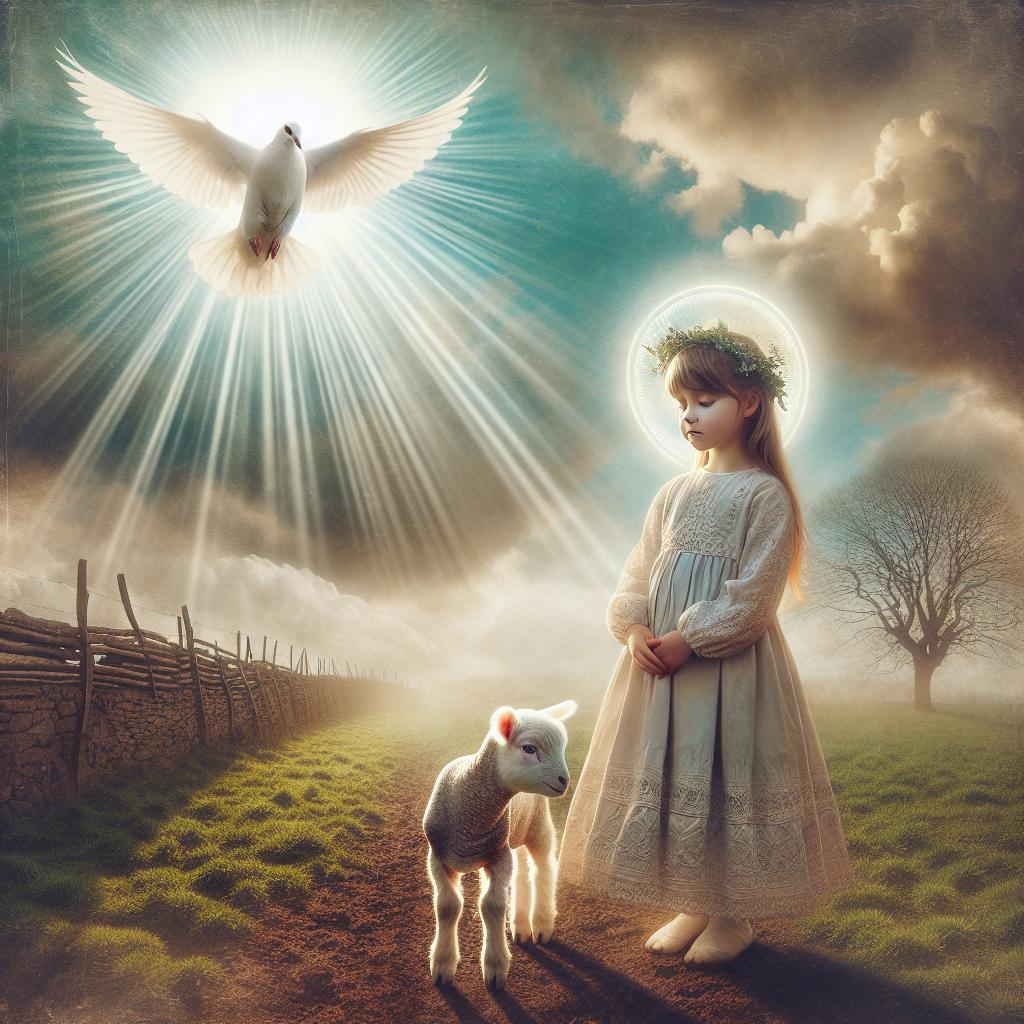
Divine Lessons from Mary's Little Lamb: A Christian Insight
Published: 25 April 2024
Mary Had a Little Lamb
Remember the nursery rhyme, 'Mary had a little lamb...'? This simple poem was inspired by a real, living lamb. Just like the rhyme required a designer, the real lamb that inspired it reveals a masterpiece of design and a Master Designer.
Preparation for Birth
As a lamb's birth approaches, the ewe's body undergoes various changes in preparation. Hormones cause the ewe to become more tame and quiet. Softening of tissues and bones allows for flexibility during birth. The udder prepares colostrum, the first milk. Inside the ewe, the lamb automatically positions itself for birth, forming a wedge with its head resting on its front legs to gently open the birth canal. This positioning allows for an easier delivery.
Amazing Birth Wool
Newborn lambs are covered with densely packed, finely curled wool. As they move and dry, this wool unsprings from its dense, skin-hugging position, forming a thin layer of curly wool that traps air and acts as an insulating blanket. The new wool grows immediately but is not as dense or finely curled as the birth wool. It is also rich in lanolin, a natural oil that waterproofs the wool and adds to its insulation.
First Feed
Almost immediately after birth, the newborn lamb struggles to its feet for its first feed. The ewe may position herself so the lamb can easily find her milk. However, she is often distracted with licking and keeps swinging her hindquarters away, making the lamb find its own way to the "milk bar." As the lamb bumps around, it stimulates the sheep to lower her hindquarters, bringing the udder forward and making the teats easily accessible for the lamb's mouth.
The first milk, called colostrum, is remarkable. It has over twice as much protein as regular milk and is packed with extra nutrients and antibodies needed by the newborn lamb. Colostrum kick-starts the immune and digestive systems, removes meconium from the gut, and provides a protective coating. A small drink of colostrum after birth can keep a lamb alive for about 12 hours. Without colostrum, lambs are bound to die.
Feeding Behavior
As the lamb searches for milk, it may butt the ewe's udder, stimulating the release of oxytocin hormones that cause the ewe to let down her milk. The mother sheep identifies her lamb mostly by smell and constantly checks it is the correct lamb by smelling it. This touching stimulates the lamb to intense sucking. The ewe's care diminishes as the lamb grows bigger and stronger.
Protective Care
The ewe is extremely protective for the first few days after birth. She challenges or charges any small animal that comes too near her lamb. She circles around her lamb and calls it back if it walks away. When her udder feels full, she calls it to drink. As the lamb grows more independent, the ewe's care diminishes further.
The Lamb of God
The nursery rhyme 'Mary had a little lamb' reminds us of the biblical theme of lambs. The first death in recorded history was the killing of an animal to provide garments of skin for Adam and Eve, covering their shame after they sinned in the Garden of Eden. Throughout the Bible, this theme continues with sacrificial lambs being offered to atone for sin.
At the beginning of Jesus' public ministry, John the Baptist called him 'the Lamb of God' who takes away the sin of the world. Jesus, as the sacrificial Lamb of God, shed his blood on the cross to cover our offenses and guilt. He rose again from the dead to be our Savior and Lord.
Why This Matters
Understanding the intricate design of lambs and their birth process highlights the complexity and purpose in God's creation. It reminds us of the biblical theme of sacrificial lambs and points to Jesus Christ as the ultimate Lamb of God who gave his life for our salvation.
Think About It
Consider the remarkable design features of lambs discussed in this article. How do they point to an intentional, purposeful Creator? How does the biblical theme of sacrificial lambs help you understand Jesus' role as the Lamb of God who offers forgiveness and salvation?
